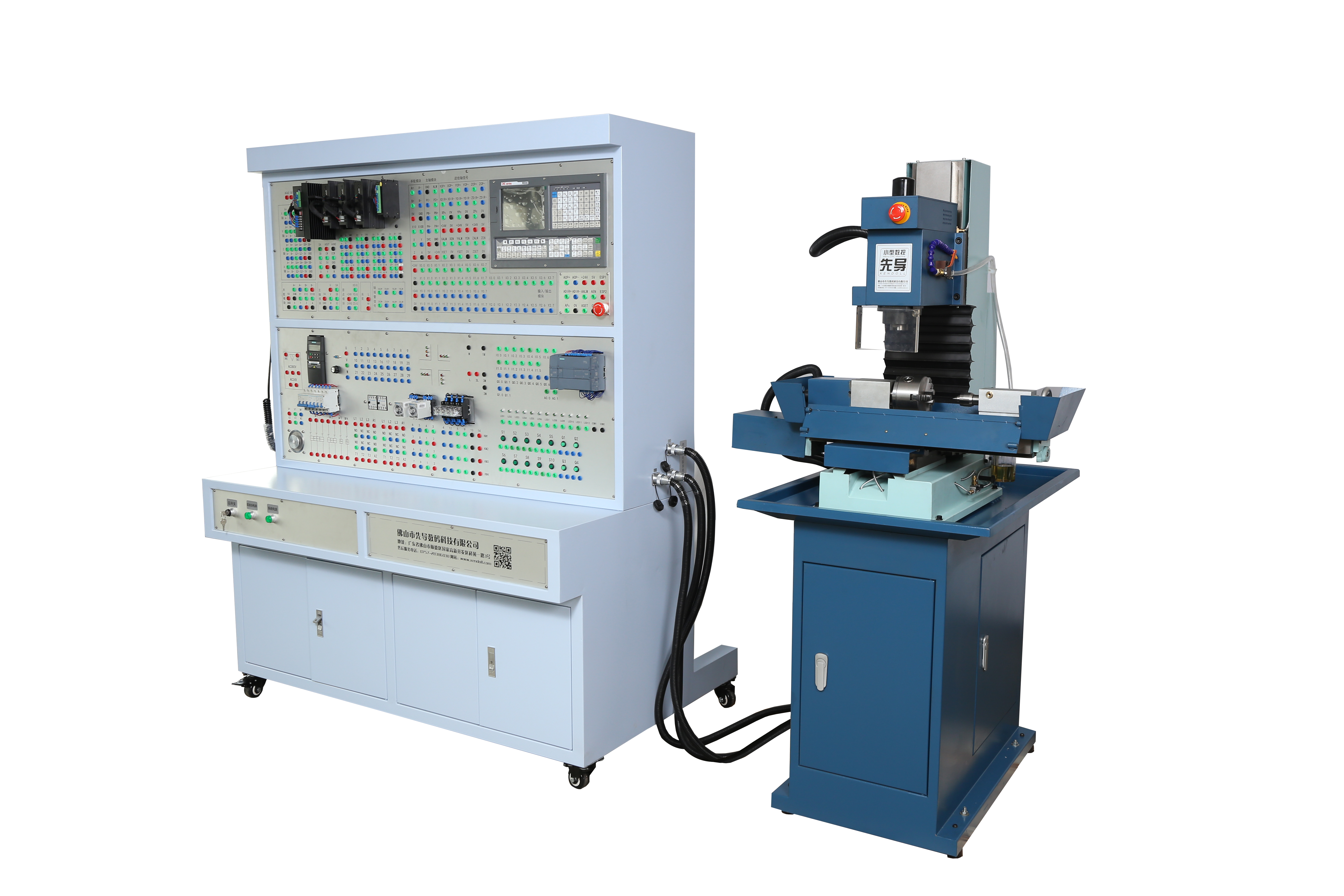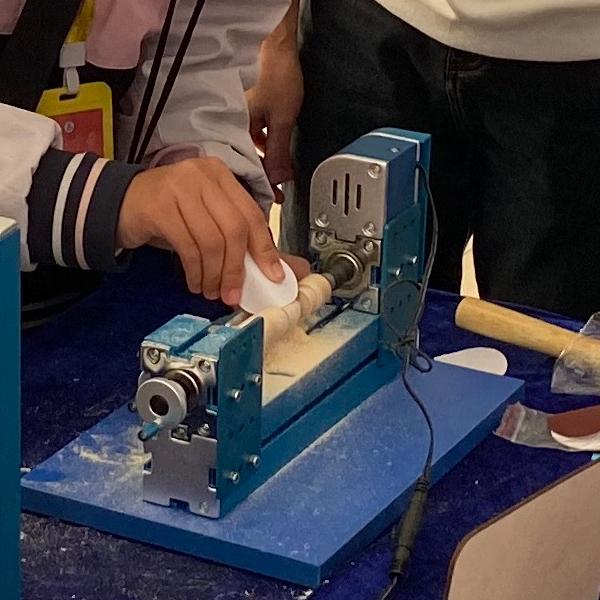Blog
Xendoll has 22 years of experience in the production of small machine tools. We will help you choose the suitable machine and share our experience in CNC machining with you.
 Aug 14, 2025
Aug 14, 2025

 799
799
Introduction: Beyond Turning – The Lathe's Hidden Talent
The lathe machine, renowned as the "mother of machine tools," is fundamentally designed for turning operations – rotating a workpiece against a stationary cutting tool to create cylindrical shapes. Yet, with ingenuity and the right accessories, this versatile workhorse can also perform milling operations. This capability transforms a standard lathe, especially valuable compact models like those from Xendoll, into a more flexible workshop center, particularly appealing to machining enthusiasts, educators, and small-scale fabricators. So, how is milling actually achieved on a machine designed for rotation? Let's delve into the core methods.

Core Methods for Milling on a Lathe
The Live Tooling Approach (Requires Specific Lathe Type):
The workpiece is securely held in the lathe's main chuck or collet, but the spindle is locked in position (not rotating).
The live tool (e.g., an end mill held in a driven tool holder) is positioned in the tool post or turret.
This tool is then powered on and rotates at the appropriate speed for milling.
Milling cuts are achieved by moving the rotating tool against the stationary workpiece using the lathe's carriage (X-axis) and cross-slide (Z-axis) feeds. The compound slide can provide angular movement if needed.
Concept: This method is primarily feasible on more advanced lathes, notably CNC lathes with live tooling capabilities or specially equipped manual lathes. "Live tooling" refers to powered tools (end mills, drills, slot drills) mounted in the turret or tool post, capable of rotating independently of the main spindle.
Execution:
Advantages: Allows for true milling operations like slotting, profiling, drilling off-center holes, and face milling without removing the workpiece. Highly efficient for complex parts on suitable machines.
Limitations: Requires a lathe specifically equipped with live tooling drive systems, which are common in CNC lathes but less so in basic manual models.
The Workpiece Rotation Method (Classic Manual Lathe Technique):
Flats: Machining flat surfaces on round stock ends or sides.
Slots: Cutting straight slots or keyways.
Pockets: Creating shallow recessed areas.
Drilling/Boring (Off-Center): Using the slides to position holes accurately off the central axis.
Secure the Milling Cutter: Mount an end mill, slot drill, or even a fly cutter securely into a collet or drill chuck installed in the lathe's headstock spindle. Lock the spindle to prevent rotation.
Mount the Workpiece: Instead of holding the workpiece in the chuck, it is fixed to the lathe's cross-slide. This is typically done using a sturdy milling vise bolted directly onto the cross-slide table.
Perform the Milling Operation: Start the lathe to rotate the milling cutter. Carefully use the carriage handwheel (moving the cutter along the bed - Z-axis relative to the workpiece) and the cross-slide handwheel (moving the cutter perpendicular to the bed - X-axis relative to the workpiece) to feed the workpiece (via the vise) into the rotating cutter. The compound slide can provide fine depth control (Y-axis equivalent).
Concept: This is the most common method for performing milling-like operations on a standard manual lathe without live tooling. Here, the milling cutter is held stationary in the lathe's spindle (using a collet chuck or drill chuck), and the workpiece is moved against it using the lathe's slides.
Execution:
Common Operations: This setup excels at tasks like:
Advantages: Utilizes standard manual lathe components. Relatively inexpensive to set up (requires a good milling vise). Significantly expands the lathe's capability.
Limitations: Setup can be less rigid than a dedicated milling machine, limiting depth of cut and feed rates. Workpiece size is constrained by the cross-slide travel and vise capacity. Requires careful planning of workpiece holding on the slide.
Essential Considerations for Safe and Effective Lathe Milling
Safety First: Milling generates significant forces and chips differently than turning. Always:
Wear safety glasses and secure loose clothing/hair.
Ensure all clamps, chucks, and tooling are extremely secure. Double-check spindle locks.
Remove the chuck key immediately after use!
Use sharp cutters appropriate for the material.
Start with light cuts and conservative feed rates.
Rigidity is Paramount: The biggest challenge is overcoming the inherent lower rigidity compared to a mill. Minimize overhang of the cutter and workpiece. Use the shortest, stoutest cutter possible. Bolt the milling vise down tightly.
Speed and Feed: Cutting speed (SFM) is determined by the cutter material and diameter and the workpiece material. Calculate the required Spindle RPM accordingly is a simplified formula). Feeds need to be conservative; let the cutter work without forcing it.
Tool Holding: Secure collet chucks (like ER collet systems) are vastly superior to drill chucks for holding milling cutters, offering better grip and concentricity.
Work Holding: A solid milling vise mounted centrally on the cross-slide is essential for the workpiece rotation method. Ensure the workpiece is clamped securely within the vise.
Lubrication/Coolant: Use appropriate cutting fluid for the material being machined to improve tool life, surface finish, and chip evacuation, especially important in confined setups.

Conclusion: Expanding Your Workshop's Horizons
While a lathe will never fully replace a dedicated milling machine, understanding how milling can be carried out on a lathe unlocks remarkable versatility. Whether utilizing advanced live tooling on a CNC lathe or employing the ingenious workpiece rotation method with a cross-slide vise on a manual lathe, you can significantly broaden the range of parts you can create. For machining enthusiasts, educators demonstrating fundamental principles, or small workshops needing maximum flexibility from minimal floor space – like those utilizing Xendoll's precision mini lathes – mastering these techniques is incredibly valuable. It transforms your lathe from a specialist into a more capable multifunctional tool. By focusing on safety, rigidity, and appropriate speeds and feeds, you can safely add milling operations to your lathe repertoire and tackle more complex projects with confidence.
Discover the precision tools and accessories, including compatible vises and collet systems, to unlock your lathe's full potential at xendolltools.com – your partner in compact machining excellence.



 Show all our samples
Show all our samples
 Provide you with a free quote
Provide you with a free quote
 Answer all the questions you may have
Answer all the questions you may have
 Guided installation and other options
Guided installation and other options